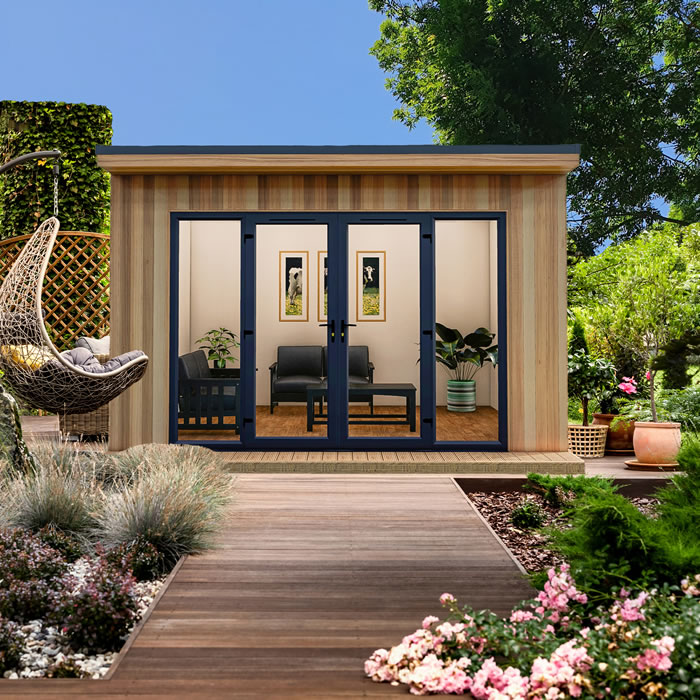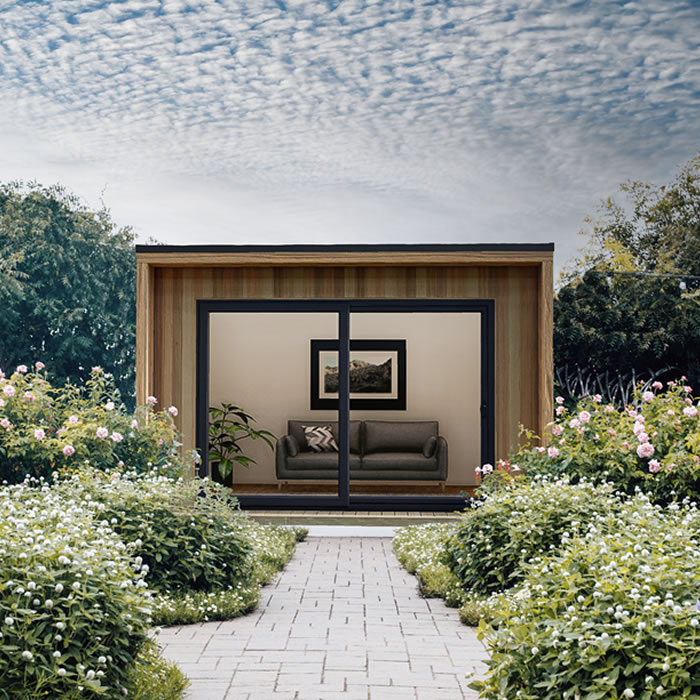Free Advice For Planning Permission For Garden Rooms
Free Advice For Planning Permission For Garden Rooms
Blog Article
What Permits Are Needed To Build Garden Rooms Or Other Similar Structures In Conservation Areas?
When making gardens, conservatories, outhouses, garden offices, or extensions within conservation areas, particular restrictions apply to preserve the character and appearance of the areas designated for conservation. Planning permits are required in conservation areas. Here are some important points to consider.
Conservation areas may require permission to plan any building extension, addition or any other construction that would normally be included in permitted development rights. This applies to garden structures as well as sheds, outbuildings and other structures.
Scale and size:
If they affect the style or appearance of the region the structure of any size could need planning permission. In designated areas, there are stricter limits on the dimensions and shape of new structures or extensions.
Location:
It is more typical to need planning permission for extensions and buildings which are situated in front or on the sides of the home. Planning permission may be needed for rear structures if it is visible from public areas or impacts the general character.
Materials and Design
It is important to choose the right materials and designs compatible with the historic or architectural interest of the region. The materials that are used in any extension or new construction must be in accordance with the historic or architecture area's interest. In order to meet these criteria, you will need planning permission.
Demolition:
To ensure that any modifications to the area aren't unnatural to the area The planning permit is required for demolitions of parts of structures that are in use, like outbuildings or boundary walls.
Height Restrictions
In conservation areas, the height restriction is more stringent. Any structure that exceeds 2.5 meters high (especially less than 2 meters from the border) is likely to require planning permission.
Effects on the Surroundings
A permit for planning is required for any construction or extension that will have a significant effect on the look or the setting of a conservation area. This includes views from and to the area.
Building use:
Planning permission might be required even if the garden room or outbuilding is within allowed dimensions. This could be due to an alteration in the use of the house.
Changes to the original design:
Extensions that go beyond certain dimensions or volume limits, or that change the exterior design of the building will generally require approval for planning. This includes conservatories as well as other major changes.
Curtilage Structures:
The curtilage of an listed building in conservation districts always require permission for planning. This is for expansions, outbuildings or alterations.
The Trees are protected
Trees are protected within conservation areas. If the proposed development will affect trees, you might require additional permissions, like tree works permits, in addition to planning permission.
Local Authority Guidelines
Local planning authorities can establish particular guidelines and limits for every conservation area. These rules can be tailored to suit the unique characteristic and features of each area.
Planning permission in conservation areas will require a review of whether the proposed gardenroom, conservatory, outhouse or garden office will have an affect the architectural and historical characteristics of the conservation area. Early discussion with the local authority for planning is vital to ensure compliance with all guidelines and regulations. Read the most popular do i need planning permission for garden office for blog examples including ground screws vs concrete, garden room or extension, garden room vs extension, garden room, insulated garden buildings, garden room planning permission, 4m x 4m garden room, garden out house, garden rooms in St Albans, garden room conservatory and more.![]()
What Is The Neighbourhood Plan Permission For Garden Rooms, Etc.?
If you're planning to construct gardens, conservatories outhouses, gardens offices or extensions, neighborhood concerns are a major factor when determining whether permits are required for planning. There are two crucial aspects to consider: Privacy and Overlooking.
Planning permission is typically required if the proposed structure may overlook neighbouring properties and cause privacy loss. This is so that the new structure doesn't adversely impact the living conditions of those living close to.
Overshadowing and loss of light
Planning permission may be needed for projects that likely to create shadows over adjacent homes or a substantial reduction in lighting. Local planning authorities evaluate the impact that day and night light have on homes nearby.
Noise and Disturbance
If the garden room or extension is going to be utilized for activities that produce noise (such as the home office that has guests, a workshop or music room), planning permission is required. The volume of sound must be within acceptable limits and must not be disruptive to neighbors.
Visual Impact and Character
The new structure's design size, appearance and dimensions must be in keeping with the aesthetics of the neighborhood. The planning permission is required in order to make sure that the new development is visually pleasing and doesn't harm the aesthetics of the neighborhood.
Boundary Proximity
If the structures are taller than 2.5 meters, and they are within 2 meters from the property line, then permission for planning is required. This is in order to settle any possible disputes or impact on adjacent properties.
Shared Access and Rights of Way:
To avoid blocking or causing harm to shared access points and rights of way or constructions, planning approval is needed.
Rejections from neighbors:
Residents who live nearby are entitled to be informed about plans. Planning authorities will consider objections raised by neighbors when deciding on the decision to grant permission.
Impact on Values of Properties
Although not always a major aspect, significant changes that may affect the property values of neighboring homes may affect the necessity for planning permission. In deciding whether to grant permission the local authority will examine the effects.
Covenants and Deed Restrictions:
There could be covenants or restrictions on the property that need to be adhered to regardless of approval for planning. These legal agreements may determine what type of construction is allowed or cannot be permitted and could affect neighborhood harmony.
Construction Disturbance:
A planning permit can deal with concerns about disruptions created during construction including noise, dust or traffic. The conditions could be set in order to reduce the impact on neighbors.
Impact on the infrastructure
Planning permission is required if the construction will put additional strain on local infrastructure including parking, drainage and roads.
Community Consultation
In some cases a larger community consultation process is required particularly if the project is large or controversial. This allows a more democratic process of decision-making that considers local opinions.
In short, the neighborhood's concerns are a major factor in the process of obtaining planning permission for garden rooms, conservatories outhouses, garden offices or extensions. The development proposed must not negatively affect the living conditions of the neighbors and their privacy, the quality of light and sound as well as the overall look and feel. A consultation with local planning authorities and early involvement with neighbors can help to alleviate these concerns. Have a look at the best best electric heater for cabin for blog tips including outhouses, costco outbuildings, garden room permitted development, outhouse for garden, do i need planning permission for a garden room with toilet, outhouse garden, 4m x 4m garden room, what is a garden room, herts garden rooms, garden rooms and more.
Restrictions On Location: What Permits Are Required For Garden Rooms And Other Structures?
Location restrictions are crucial when planning to construct garden offices, conservatories, or outhouses. Here are some key criteria for locations closeness to boundaries:
Constructions that are less than 2 metres from the property line must not exceed 2.5 m in height. If the height exceeds these limits, a planning permit is needed.
Front of the Property:
Planning permission is typically required for any structure that is that are built on the front of the house's main elevation (the side facing the front) as the permitted development rights do not allow for forward extensions.
The Property's Aspect
Side extensions can be subject to height and size restrictions and may require planning permission when they extend past the existing side wall.
Rear of the property:
Garden rooms and rear extensions situated at the rear of the property are subject to size and height limitations. The planning permission must be obtained when these extensions exceed the permitted building boundaries.
Designated Zones
In conservation areas, Areas of Outstanding Natural Beauty (AONB), National Parks, as well as World Heritage Sites, stricter restrictions are in place. New structures may require approval for planning, irrespective of the size.
List of listed buildings
List buildings are subject to stringent regulations. No matter where the structure is on your property, you will require planning permission as well as approved building permits for any extensions or modifications.
Green Belt Land:
In order to maintain open spaces, it is extremely difficult to construct on greenbelts. The majority of times the construction or alteration that is major requires a special permit.
Areas at risk of flooding
If the property is located in a flood risk zone further regulations are required to ensure that the building doesn't increase the risk of flooding. Planning permission and possibly an assessment of risk for flooding could be required.
Urban vs. rural environments
In cities, regulations differ from those found in rural regions. Rural properties are typically more flexible with regards to restrictions in regards to the size and location of outbuildings. The rules vary greatly.
Highways and Public Rights of Way:
The structure may need planning permission to avoid obstructing views, access or security if it is close to highways, roads or other rights-of-way for public use.
Shared Ownership or Leasehold Land
If you own a property which are part or leasehold or shared ownership plans it is possible to obtain additional permissions, whether from the managing entity or freeholder or planning permission depending on your local regulations.
The Structures Adjacent:
It could be necessary to seek planning permission when the new structure is planned to be constructed close to existing structures or buildings, specifically on neighbouring property. This will ensure that the structure or land adjacent to it does not suffer any negative effects.
Always consult your local planning authority in order to receive specific guidance tailored for your property, its location and circumstance. Local policies could have a major impact on regulations. It is essential to adhere to all restrictions in order to avoid legal or financial penalties. Take a look at the most popular connect armoured cable to consumer unit for website examples including garden rooms in St Albans, garden rooms, how to get power to a garden room, ground screws vs concrete base, garden office, gym outhouse, garden room permitted development, garden room conservatory, Tring garden rooms, outhouses and more.